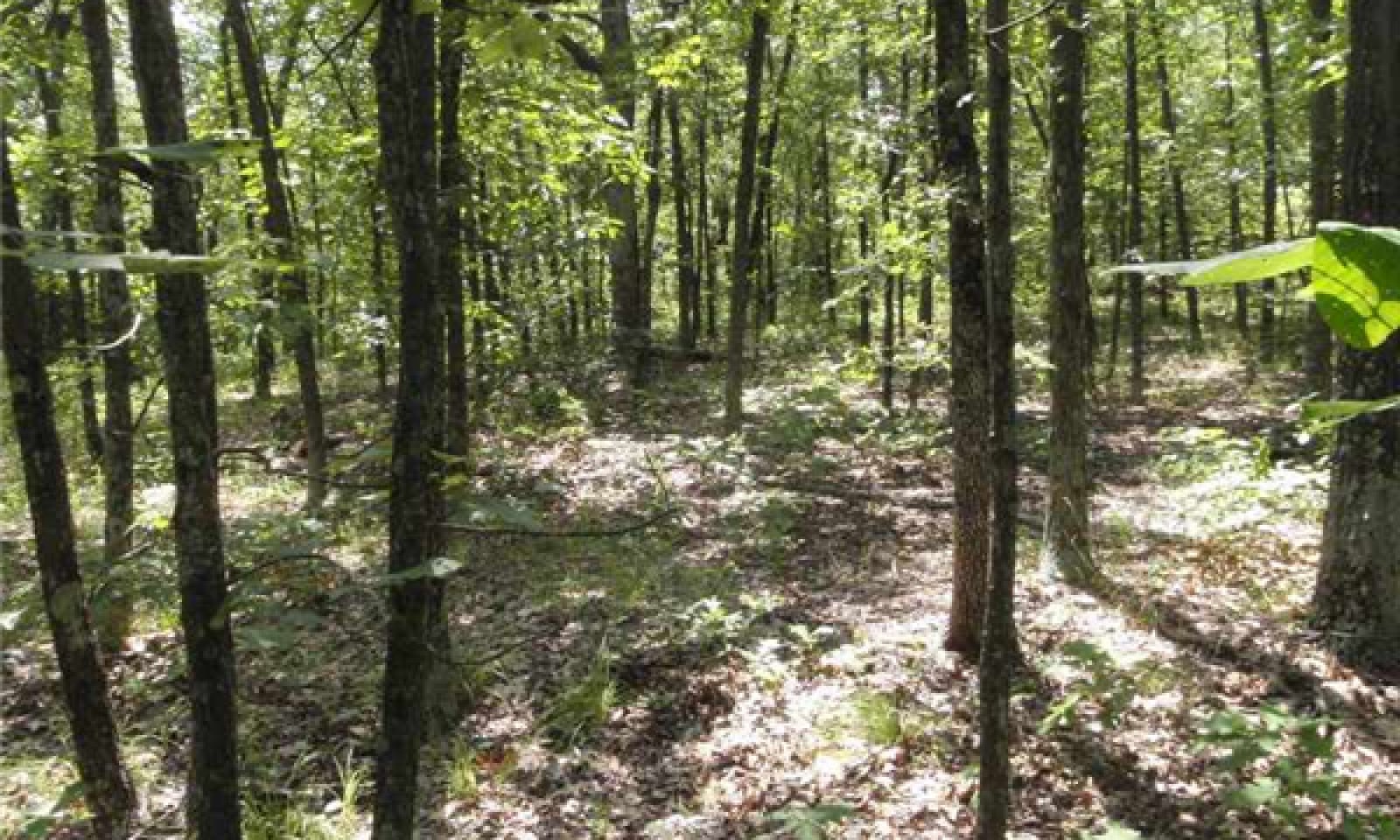
Dry Igneous Upland Woodland
Scenario model
Current ecosystem state
Select a state
Management practices/drivers
Select a transition or restoration pathway
- Transition 1A More details
- Transition 1B More details
- Restoration pathway 2A More details
- Restoration pathway 3A More details
- Transition 3A More details
-
No transition or restoration pathway between the selected states has been described
Target ecosystem state
Select a state
Description
The reference state was old growth woodland dominated by short (30 to 50 feet) open grown post oak, with scattered blackjack oak, northern red oak, and black oak and an occasional shortleaf pine. Canopy closure varies with aspect and soil depth from open 30 to 50 percent canopy, on most exposed positions, on shallower soils, to more closed, 50 to 80 percent canopy on more protected positions with deeper soil profiles. The understory is open with a dense ground flora of native grasses and forbs.
Fire played an important role in the maintenance of this state as well. It is likely that these ecological sites, along with adjacent knobs burned at least once every 5 years. These periodic fires would have kept woodlands open, removed the litter, and stimulated the growth and flowering of the grasses and forbs. Soil fertility and site productivity are low. Two community phases are recognized in the reference state, with shifts between phases based on disturbance frequency. Old growth woodlands are very rare today.
Submodel
Description
This state is dominated by post oak and northern red oak. They can form relatively even-aged stands, dating to when fire suppression became the dominant management characteristic on the site. This stage can occur relatively quickly (10 to 20 years). Canopy closures can approach 80 percent with little or no ground flora. Without active management or long term presence of fire, woody species will encroach into these woodlands. Once established, these woody species can quickly fill the woodland system. Most occurrences of this state today are dense, and shady with a greatly diminished ground flora. Removal of the younger understory, opening the upper canopy, and the application of prescribed fire has proven to be effective management tools. Timber harvesting is very limited on these sites because of the poor quality and tree size. This state is an excellent wildlife site.
Submodel
Description
In the long term absence of fire, woody species have encroached into this woodland state. Once established, these woody species will quickly fill the woodland system. Removal of the younger understory and the application of prescribed fire have proven to be effective management tools.
Timber harvesting is very limited on these sites because of the poor quality and tree size. This state, while of limited timber value, has experienced occasional uncontrolled harvesting (high grading) of northern red oak and white oak that has reduced the densities of these species causing an increase in black oak and blackjack oak.
Submodel
Mechanism
This transition is the result of fire suppression that exceeds 20 years.
Mechanism
This transition is the result of fire suppression that exceeds 20 years and periodic indiscriminant logging of the higher quality oaks.
Mechanism
This restoration pathway results in the removal of eastern redcedar and oak and hickory saplings. Prescribed fire is reestablished on a periodic basis of every 5 years.
Relevant conservation practices
| Practice | External resources |
|---|---|
|
Prescribed Burning |
|
|
Restoration and Management of Rare and Declining Habitats |
|
|
Forest Stand Improvement |
Mechanism
This restoration pathway results in the removal of eastern redcedar, black oak, and buckbrush. Post oak and northern red oak species are favored to be retained. Prescribed fire is reestablished on a periodic basis of every 5 years. This restoration time may take 20 to 30 years before a reference community is reestablished.
Relevant conservation practices
| Practice | External resources |
|---|---|
|
Brush Management |
|
|
Prescribed Burning |
|
|
Restoration and Management of Rare and Declining Habitats |
|
|
Forest Stand Improvement |
Model keys
Briefcase
Add ecological sites and Major Land Resource Areas to your briefcase by clicking on the briefcase (![]() ) icon wherever it occurs. Drag and drop items to reorder. Cookies are used to store briefcase items between browsing sessions. Because of this, the number of items that can be added to your briefcase is limited, and briefcase items added on one device and browser cannot be accessed from another device or browser. Users who do not wish to place cookies on their devices should not use the briefcase tool. Briefcase cookies serve no other purpose than described here and are deleted whenever browsing history is cleared.
) icon wherever it occurs. Drag and drop items to reorder. Cookies are used to store briefcase items between browsing sessions. Because of this, the number of items that can be added to your briefcase is limited, and briefcase items added on one device and browser cannot be accessed from another device or browser. Users who do not wish to place cookies on their devices should not use the briefcase tool. Briefcase cookies serve no other purpose than described here and are deleted whenever browsing history is cleared.
Ecological sites
Major Land Resource Areas
The Ecosystem Dynamics Interpretive Tool is an information system framework developed by the USDA-ARS Jornada Experimental Range, USDA Natural Resources Conservation Service, and New Mexico State University.






